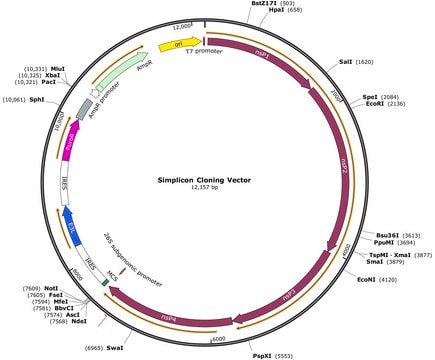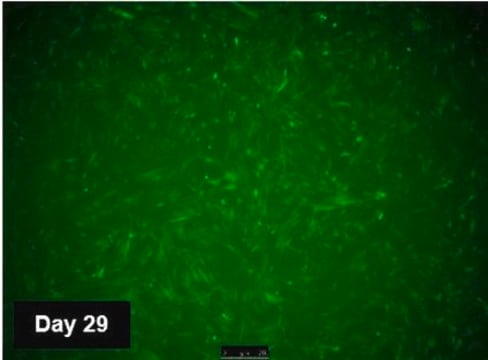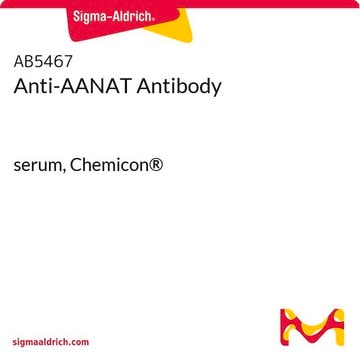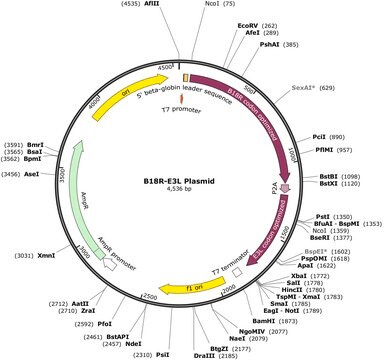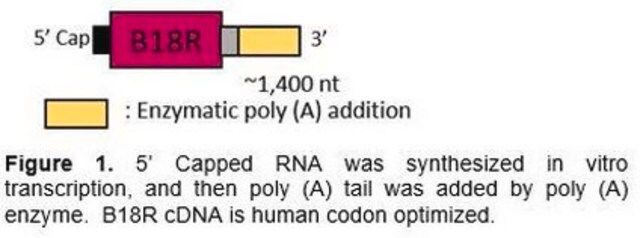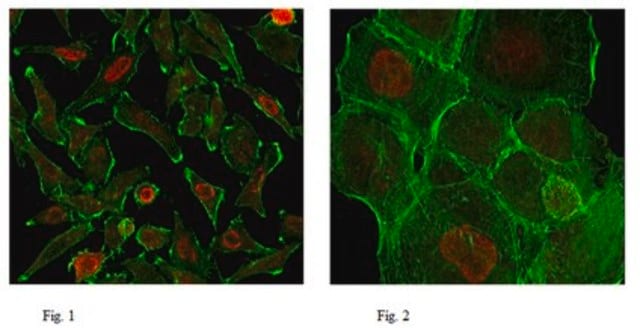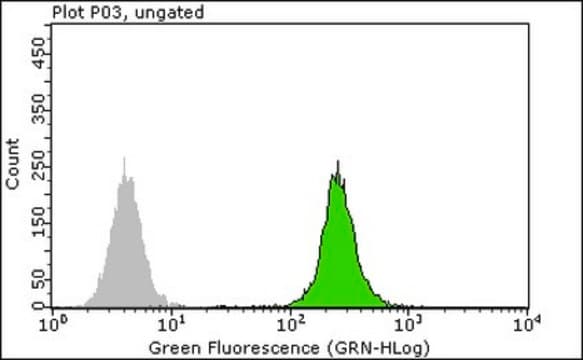MABE1078
Anti-TAF10/TAFII30 Antibody, clone 23TA-1H8
ascites fluid, clone 23TA-1H8, from mouse
Synonym(e):
Transcription initiation factor TFIID subunit 10, STAF28, TAF(II)30, TAFII-30, TAFII30, Transcription initiation factor TFIID 30 kDa subunit
About This Item
Empfohlene Produkte
Biologische Quelle
mouse
Qualitätsniveau
Antikörperform
ascites fluid
Antikörper-Produkttyp
primary antibodies
Klon
23TA-1H8, monoclonal
Speziesreaktivität
human
Darf nicht reagieren mit
mouse
Methode(n)
ChIP: suitable
immunocytochemistry: suitable
immunoprecipitation (IP): suitable
western blot: suitable
Isotyp
IgG1κ
NCBI-Hinterlegungsnummer
UniProt-Hinterlegungsnummer
Versandbedingung
dry ice
Posttranslationale Modifikation Target
unmodified
Angaben zum Gen
human ... TAF10(6881)
Allgemeine Beschreibung
Spezifität
Immunogen
Anwendung
Epigenetik & nukleäre Funktionen
Transkriptionsfaktoren
Western Blotting Analysis: A representative lot detected TAF10 (TAFII30) in HeLa nuclear extracts as well as in SPT20-containing SAGA immune complex, but not in ADA2a-containing ATAC immune complex (Nagy, Z, et al. (2010). Cell. Mol. Life Sci. 67(4):611-628).
Western Blotting Analysis: Representative lots detected the presence of TAF10 (TAFII30) in TAFII30-containing complexes immunoprecipitated from HeLa nuclear extracts (Nagy, Z., et al. (2009). Mol .Cell. Biol. 29(6):1649-1660; Wieczorek, E., et al. (1998). Nature. 393(6681):187-191).
Immunoprecipitation Analysis: Representative lots immunoprecipitated TAF10- (TAFII30-) containing complexes from HeLa nuclear extracts (Nagy, Z., et al. (2009). Mol .Cell. Biol. 29(6):1649-1660; Wieczorek, E., et al. (1998). Nature. 393(6681):187-191).
Qualität
Western Blotting Analysis: A 1:1,000 dilution of this antibody detected TAF10/TAFII30 in 10 µg of A431 cell lysate.
Zielbeschreibung
Physikalische Form
Lagerung und Haltbarkeit
Handling Recommendations: Upon receipt and prior to removing the cap, centrifuge the vial and gently mix the solution. Aliquot into microcentrifuge tubes and store at -20°C. Avoid repeated freeze/thaw cycles, which may damage IgG and affect product performance.
Sonstige Hinweise
Haftungsausschluss
Not finding the right product?
Try our Produkt-Auswahlhilfe.
Lagerklassenschlüssel
12 - Non Combustible Liquids
WGK
WGK 1
Flammpunkt (°F)
Not applicable
Flammpunkt (°C)
Not applicable
Analysenzertifikate (COA)
Suchen Sie nach Analysenzertifikate (COA), indem Sie die Lot-/Chargennummer des Produkts eingeben. Lot- und Chargennummern sind auf dem Produktetikett hinter den Wörtern ‘Lot’ oder ‘Batch’ (Lot oder Charge) zu finden.
Besitzen Sie dieses Produkt bereits?
In der Dokumentenbibliothek finden Sie die Dokumentation zu den Produkten, die Sie kürzlich erworben haben.
Unser Team von Wissenschaftlern verfügt über Erfahrung in allen Forschungsbereichen einschließlich Life Science, Materialwissenschaften, chemischer Synthese, Chromatographie, Analytik und vielen mehr..
Setzen Sie sich mit dem technischen Dienst in Verbindung.
